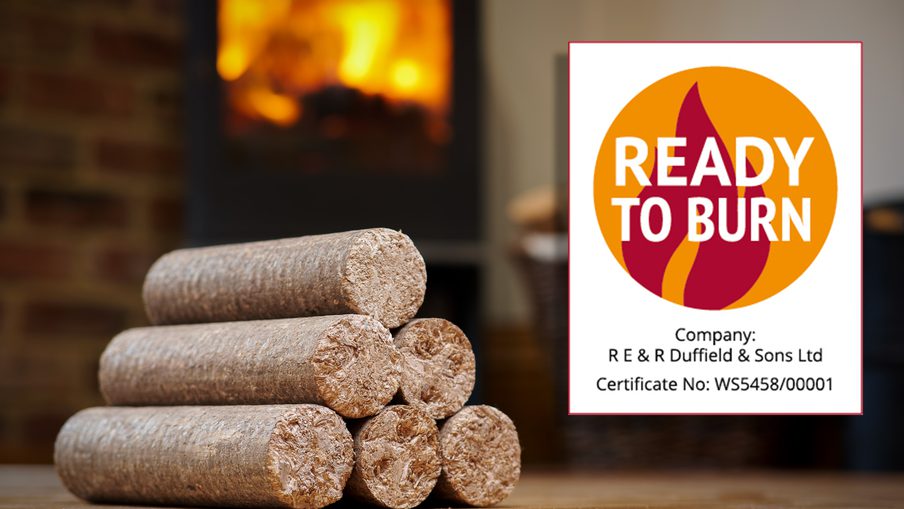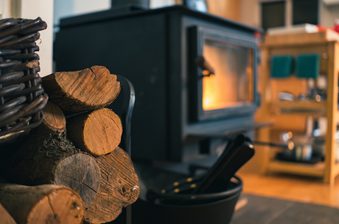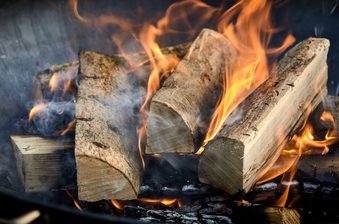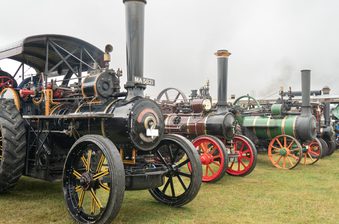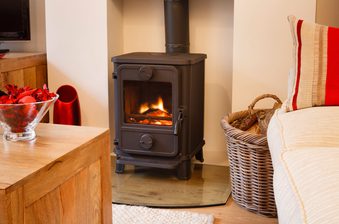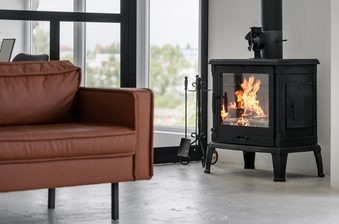Since 2021, it’s been a legal requirement for firewood sold in volumes under 2m³ to carry the ‘Ready to Burn’ certification mark – this means it’s been independently certified to have a moisture content of less than 20%.
To prevent the burning of this highly-polluting unseasoned (‘wet’) wood, from May 2021, firewood sold in quantities under 2m³ must be ‘Ready to Burn’ certified. If sold in volumes larger than this, advice must be given on how to store and season the wood.
These rules were introduced with a new piece of legislation, The Air Quality (Domestic Solid Fuels Standards) (England) Regulations 2020, which is part of the government’s Clean Air Strategy 2019.
What is the Ready to Burn scheme?
Ready to Burn is a wood certification scheme administered by Woodsure, a non-profit organisation, on behalf of The Department for Environment, Food & Rural Affairs (Defra). Suppliers can be Ready to Burn certified for five types of wood fuel: firewood, briquettes, kindling, woodchip and wood pellets.
If the moisture content of the wood fuel falls below the 20% threshold, then the certification mark can be awarded. All wood that is Ready to Burn certified – and therefore suitable for sale in volumes under 2m³ – will carry the certification mark on the packaging.
There is also a Ready to Burn scheme for manufactured solid fuels (MSF), like coal. This is operated by HETAS, also a non-profit organisation. To qualify for certification under this scheme, the fuels must have less than 2% sulphur content.
The process of becoming a Ready to Burn certified supplier
To achieve certification, suppliers must submit to a rigorous audit – as we can attest to, being a certified supplier of Ready to Burn briquettes!
During the testing process, Woodsure’s auditors will check the moisture content of the wood fuel by taking an initial pin reading using a Valiant moisture metre. This instrument is pressed into the centre of the wood, across the grain, to give a reading of the moisture content.
There will also be an in-depth moisture test at a laboratory, using three separate log samples. This involves weighing each sample, placing it under a controlled temperature environment for 15 hours, then weighing the samples afterwards to determine change in weight – and therefore the moisture content of the samples.
With briquettes, a chemical analysis also takes place in order to verify that the raw materials’ origin is clean, untreated or virgin wood.
Being Ready to Burn certified also involves ‘mystery shops’ where samples are collected and tested. Auditors will also ensure that suppliers are correctly displaying point-of-sale information.
That’s not all, either: this audit and testing process takes place annually. It’s a rigorous process, but necessarily so – Ready to Burn is the gold standard for quality wood fuel, giving consumers the ultimate confidence in the products they buy!
Why moisture content matters in wood
When moist wood is burned, steam evaporates which cools the fire, kicking out smoke, carbon dioxide (a greenhouse gas) and fine particulate matter. It can also lead to buildup of creosote – a carcinogenic, explosive substance.
Dry wood, on the other hand, does not smoulder as easily. It combusts more cleanly and efficiently – reducing smoke, harmful particulates and tar in your appliance’s flue.
The burning of freshly-cut, poorly-seasoned wood used to be fairly common in Britain. Whilst emissions are at their lowest level since 1970, the household burning of wood and coal still accounts for around 38% of the UK’s primary emissions of fine particulate matter.
This underlies the government’s strategy to phase out the use of highly-polluting moist wood and house coal.
‘Smoke control zones’
Banning the sale of ‘wet’ wood in smaller quantities isn’t the only legislation aimed at reducing pollution associated with burning fuels in domestic and residential properties.
If you live in a smoke control area, you need to burn your fuels in an appliance that is approved by Defra – or you could be fined up to £1,000.
Excessive smoke emissions from chimneys could also land you a £300 fine – so if you have a chimney, avoiding wet wood will help to keep pennies in your pocket!
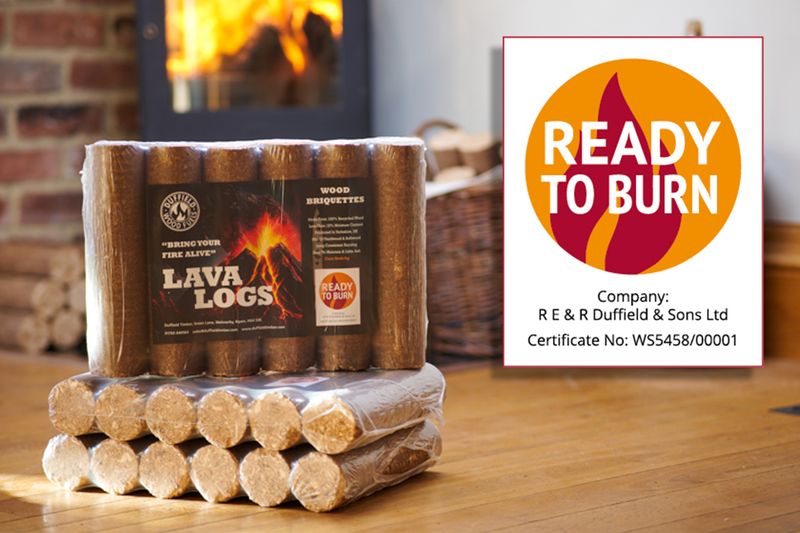
Stay warm (and air quality compliant) with ‘Ready to Burn’ Lava Log wood briquettes
At Duffield Timber, we are a certified Ready to Burn supplier. Our high-density Lava Log wood briquettes, made from recycled by-products from our milling operations, boast 9.3% moisture content and carry the Ready to Burn certification mark.
They deliver a hot, clean, long-lasting burn for wood-burning stoves, open fireplaces, chimineas and fire pits. We’ve even tested their performance – compared to traditional logs, Lava Logs produce three times the heat output on average after 2.5 hours. This superior calorific value also saves you money.
Choose from three pack sizes – boxes of 3 packs (28 briquettes), half pallets (318 briquettes) and full pallets (630 briquettes) – with fast, free, UK delivery.
